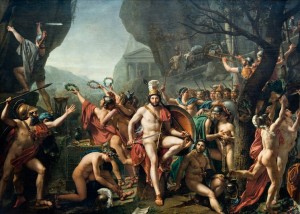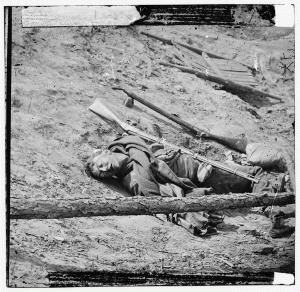I’ve collected films for a long time. Long before it was possible to keep them as computer files, I was accumulating videotapes by the gross. I love films of all kinds, good and bad, and will watch all sorts of things that puzzle my friends. Why, for instance, would anyone in 2010 want to watch Spooks Run Wild, starring the East End Kids, or a 1959 Swedish film about extraterrestrials invading Lappland? Well, quite apart from the direct, childish pleasure this sort of thing gives me, I can pretend I have more serious, and presumably laudable reasons.
There’s an unfortunate habit among historians to talk about such and such a point in time as marking the beginning of “modernity” ― a point fixed, according to fashion, anywhere from the proof sheets of the Epic of Gilgamesh to the death of Kurt Cobain ― but there are two points in time where it can be convincingly argued that things did change for us quite drastically. After a mere thirty years of experiment, the technology of photography became widely available by the early 1850s. The sobering reality of the American Civil War leaps out at us from the photographs of Mathew Brady, and it wasn’t anything like war was depicted by the painter Jacques Louis David.
Another dramatic change in how we experience the world arrived in the last decade of the 19th century, when photographs began to move. The early days of movies fascinate me. At first, people were content merely to look at anything that would move in front of a camera. People happily flocked to the cinemas to see a chicken being plucked, a dog chasing a cat, or a man put on and take off his hat. But very, very quickly, the movies began to explore what Daniel Arijon has called “the grammar of the film language.” Film rapidly became much more than a technical gimmick for recording the appearance of the world. It created fantasies, recreated the past, retold myths, satirized, eroticized, traumatized, and induced laughter. There was nothing obvious about this grammar — which, like language, conveys incredibly complex information by means of a structured code imposed on a sequential phenomenon. In fact, much of it had to be mutually, if unconsciously, agreed upon by the film-maker and the audience. The most difficult steps in its earliest development, for example, were to discover that you could tell a story by the juxtaposition of different images, and that you could omit things from the visual narrative. This process of agreed-upon omission continued as film developed, which is one of the reasons that people have difficulty watching movies that were made long ago. Look at any normal movie made, say, in the 1930s. A character will announce that he is going to visit someone. There will be a shot showing him dialing a telephone, then requesting a taxi, then of him getting into the taxi, then of the taxi going down a street, then of it arriving at his destination, then of the character ringing a door bell, then of his being greeted. This will all seem pointless and interminably slow to a viewer today. But, if a director in 1934 had cut the film like it would be today, the audience would have been confused by what would seem to them an abrupt and incomprehensible change of scene. Most people accustomed to today’s film language will complain that almost any film made before 1980 is “too slow.” Techniques of rapid-cutting, interpolated images, and non-sequential narrative that are routinely used in any trashy action flic today were once confined to experimental “art” films discussed in the Cahiers du cinéma.
There is nothing automatic or “natural” about any of this. Reality does not happen in cross-cuts, pan shots, and jump-cut editing. Curiously, however, the techniques of film-making resemble the way we dream. When I’m woken during REM state with sufficient abruptness to remember a part of a dream, I’m struck by it’s cinematic quality. I’ve asked many other people about their dreams, and many of them have remarked, when I brought up the issue, that it did seem to them that their dreams are structured like movies, with camera angles, composition, close-ups and long views, and a time structure that compresses and omits things in much the same way that movies do. Now, why would this be? I can think of two interesting, and very different possibilities. It’s possible that, before they experienced movies on a regular basis, people didn’t dream that way. Perhaps dreams dreamed in 1822 or 1196 were nothing at all like dreams are today, and they have acquired their current pattern from the experience of watching films and television. Alternatively, it’s possible that films are satisfying to people because they replicate the structure of consciousness in some way, a structure that is also present in dreams. Most films are, more or less, dreams of some kind. They provide us with far more “alternative reality” than it would seem to be necessary merely to train us for the vicissitudes of life, or to allay boredom.
One of the reasons I watch all sorts of films is because I’m curious about what kind of things people in different times and places chose to daydream about. Another is that films ― especially routine and conventional films that are not meant to be “artistic” ― preserve vast amounts of information about the world that might otherwise be lost, and will remind us that the history we read in book form tends to be flat and over-abstracted. Looking at ordinary films from around 1930 can be extremely enlightening. For example, last night, I saw a 1930 German film called Die Drei von der Tankstelle. It was a musical comedy in which three “pals” open a gas station and fall in love with the same girl. Nothing could seem farther removed from the “Germany in 1930” that is wedged into my mind from reading books. Nor could any book give me the insights that the silent film Berlin: Die Sinfonie der Grosstadt, made only two years earlier, could. This film lyrically showed daily life in Berlin from dawn to night, following people at home, on the streets, at work, at play. It also made it clear to me why Hitler and the Nazis so intensely hated that city, with it’s insouciant, cosmopolitan life.
The Black Camel (1930) is the first Charlie Chan movie. One is struck by the fact that the Chinese characters in the movie are treated with respect and dignity, but the Japanese characters are portrayed as ludicrous slapstick idiots. Local ethnic attitudes in California have often found their way into Hollywood films. A generation before, the Chinese had been intensely persecuted in California, but had, through shear dogged persistence, worked their way to respectability by 1930. The Japanese, however, had replaced them as the butt of contempt and derision. Twelve years later, they would find themselves in “relocation camps,” though most of them had been outcast eta in Japan and had devoted themselves to their new country. The same thing happened to the Japanese in Western Canada. Warner Oland, the actor who created the Charlie Chan role, was Swedish by birth! A conscientious craftsman, and a scholar who had previously translated the works of Strindberg into English, Oland took the role very seriously. He immersed himself in Chinese culture, and spoke Mandarin. A modern viewer, exposed to post-modern rhetoric about appropriation and authenticity, would be surprised to learn that Oland was as popular in China as he was in America, if not more so. The film also contains the charming surprise of Béla Lugosi in a supporting role, just before his sudden fame as Dracula.
Looking for things like this makes movie-watching something like archaeology, to me. Just as most people are surprised that archaeologists can spend hours of back-breaking labour to unearth a few fragments of pottery or sift through tons of soil to count the fish bones in it, they are surprised that my film collection contains Critters 2: The Main Course, Tante Pose (a 1940 Norwegian comedy), Hua jai tor ra nong (“The Adventures of Iron Pussy” in Thai), and Bomba the Jungle Boy. But frankly, they often mean more to me than the film classics I’m supposed to be watching.


0 Comments.